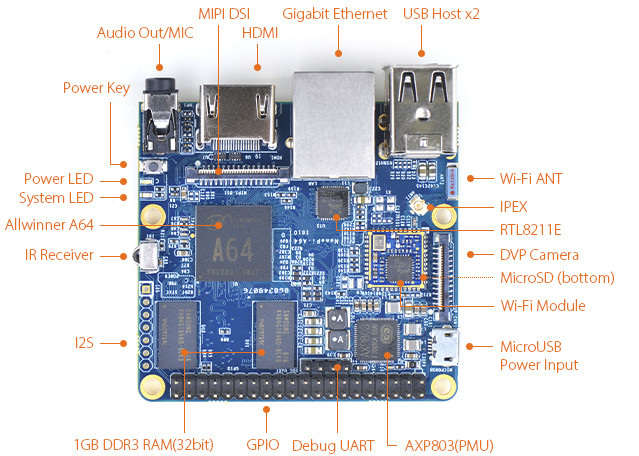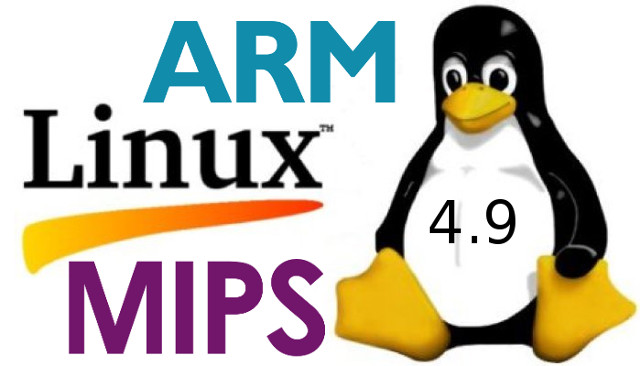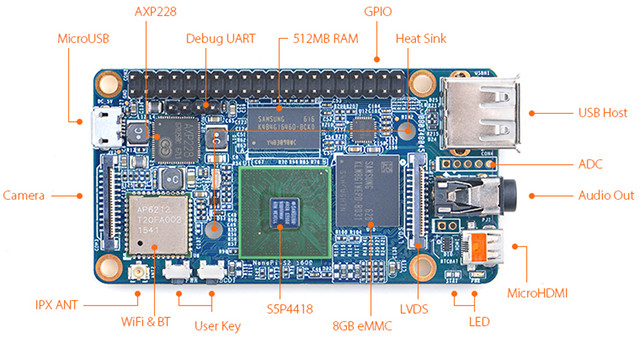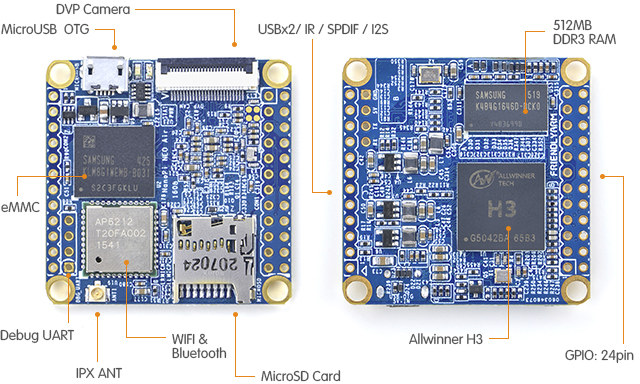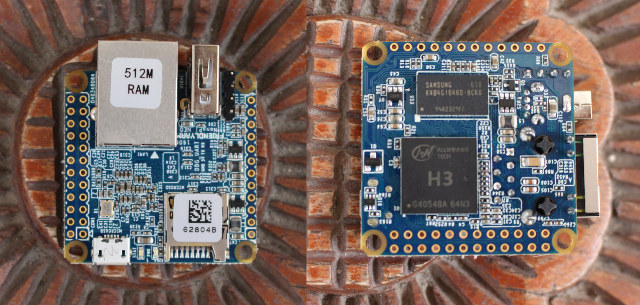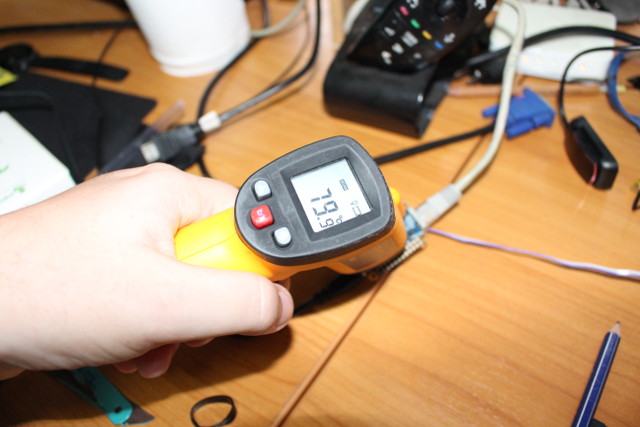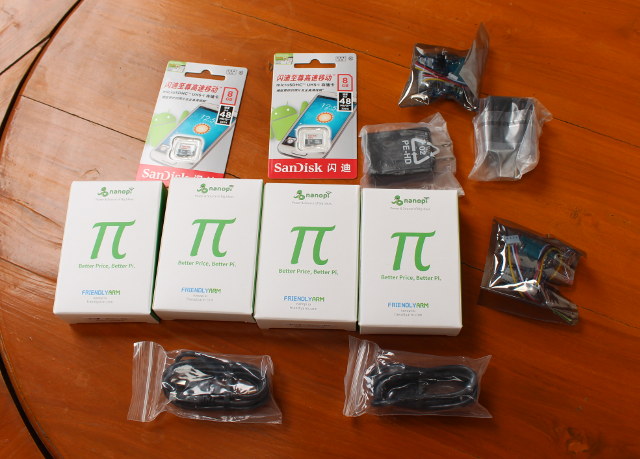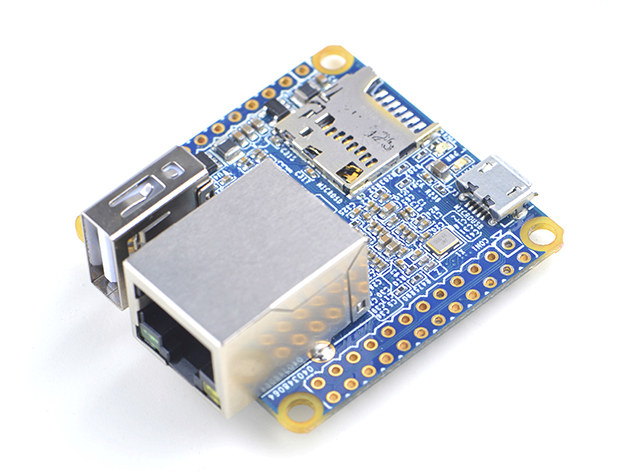FriendlyARM has had a very busy year with their NanoPi boards, and they are completing the year by launching NanoPi A64 development board based on Allwinner A64 quad core Cortex A53 processor with 1GB RAM, Gigabit Ethernet, HDMI, USB ports and more. NanoPi A64 board specifications: SoC – Allwinner A64 quad-core Cortex-A53 @ 648MHz to 1.152GHz with an ARM Mali400 MP2 GPU System Memory – 1GB DDR3 RAM Storage – 1x micro SD slot Video Output / Display IF – HDMI 1.4 port, 30-pin MIPI DSI connector Audio – HDMI, 3.5mm audio jack Connectivity – 1x Gigabit Ethernet port (RTL8211E), 802.11 b/g/n WiFi USB – 2x USB 2.0 ports, 1x micro USB port for power only Camera – 24-pin DVP camera interface Debugging – 4-pin debug UART header Expansion 40-pin mostly Raspberry Pi compatible header with UART, SPI, I2C, PWM, GPIOs, etc… 7-pin I2S header Misc – IR Receiver, 1x […]
Linux 4.9 Release – Main Changes, ARM and MIPS Architectures
Linus Torvalds released Linux 4.9 on Sunday: So Linux 4.9 is out, and the merge window for 4.10 is thus open. With the extra week for 4.9, the timing for the merge window is obviously a bit awkward, and it technically closes in two weeks on Christmas Day. But that is a pure technicality, because I will certainly stop pulling on the 23rd at the latest, and if I get roped into Xmas food prep, even that date might be questionable. I could extend the merge window rather than cut it short, but I’m not going to. I suspect we all want a nice calm winter break, so if your stuff isn’t ready to be merged early, the solution is to just not merge it yet at all, and wait for 4.11. Just so you all know (I already bcc’d the main merge window suspects in a separate mailing last […]
NanoPi S2 Quad Core ARM Linux Board Comes with WiFi & BT Connectivity, HDMI, LVDS, and LCD Interfaces
FriendlyARM has released a bunch of Allwinner based NanoPi Allwinner boards recently, but they also have some Samsung/Nexcell S5P ARM Cortex A9 boards in their portfolio, and the latest is NanoPi S2 with Samsung S5P4418 quad core processor, three display interfaces, a camera interface, wireless connectivity through WiFi and Bluetooth 4.0, a 40-pin “Raspberry Pi” header, and more. NanoPi S2 specifications: SoC – Samsung/Nexcell S5P4418 quad core Cortex A9 processor @ 400 MHz to 1.4 GHz with Mali-400MP GPU System Memory – 1 GB DDR3 Storage – 8GB eMMC flash + micro SD slot Video Output / Display I/F – micro HDMI port up to 1080p60, 24-pin LCD RGB interface, 24-pin LVDS interface Audio – 3.5mm audio jack, micro HDMI Camera – 24-pin DVP camera interface Connectivity – 802.11 b/g/n WiFi + Bluetooth 4.0 classic & LE (AP6212 module); IPEX/u.FL antenna connector USB – 1x USB 2.0 Host, 1x micro […]
FriendlyARM Introduces NanoPi NEO AIR Board with WiFi & BLE, Camera Interface and 8GB Storage for $17.99
FriendlyARM launched NanoPi NEO board with Allwinner H3 processor, Ethernet, and USB ports for $7.99 to $9.99 in July, and the company is back with a new board with the same form factor and processor, by trading Ethernet for WiFi, dropping one USB 2.0 port for a DVP camera interface, and adding an 8GB eMMC flash. NanoPi NEO AIR specifications: SoC – Allwinner H3 quad-core Cortex A7 @ 1.2 GHz with an ARM Mali-400MP2 GPU up to 600 MHz System Memory – 512 MB DDR3 Storage – 8GB eMMC Flash (Samsung) + micro SD card slot Connectivity – WiFi 802.11 b/g/n and Bluetooth 4.0 LE (via Ampak AP6212 module) with IPEX antenna connector USB – 1x micro USB OTG port, 2x USB via headers Camera – 1x DVP camera interface with optional 5MP CAM500B camera Expansion headers 24-pin header with I2C, 2x UART, SPI, PWM, and power signals 12-pin header […]
NanoPi NEO Board Gets Armbian Debian 8 & Ubuntu 16.04 with Linux 4.6 & 4.7 (Mainline), h3consumption Power Consumption Tool
We’ve been blessed with a wide range of low cost Allwinner H3 boards thanks to Shenzhen Xunlong Orange Pi and FriendylARM NanoPi boards. Recently, armbian developers have been focusing on NanoPi NEO board, and they’ve now released Debian Jessie and Ubuntu Xenial with Linux 4.6.7 and Linux 4.7.2. The latter is mainline kernel with some patchsets for Ethernet. You can download the Linux 4.6.7 based “beta” images from armbian NanoPi NEO page, and selected the “Vanilla” versions, then flash then one a micro SD card as you would normally do. Linux 4.7.2 based “experimental” images with USB OTG support and schedutil cpufreq governor can be found on the separate server in a temporary directory. Thomas Kaiser explains further: Ethernet and throttling are working (the latter not as efficient as with legacy kernel but at least it protects the SoC from overheating). Please note that all vanilla kernel images currently suffer from […]
FriendlyARM NanoPi NEO Board Benchmarks
We’ve already seen how to setup NanoPi NEO with Ubuntu Core, and while it’s mostly designed as an IoT node, for example to control relays over Ethernet or the Internet, I’ve still decided to see how it would perform under load by running Phoronix benchmarks, and then network and storage (micro SD card provided by FriendlyARM). It’s a small board, so we should expect it to heat a lot under load, especially it does not come with an heatsink by default. Also bear in mind that performance may dramatically change depending on the software implementation, and for the test, I’m using the company’s Ubuntu Core firmware. Before start the benchmark, I noticed that QTe-Demo was running in the background, probably because it was used on their other board with video output or LCD. but it’s taking some CPU usage, and is absolutely not needed here. To disable it, edit /etc/rc.local, […]
Getting Started with NanoPi NEO Development Board – Ubuntu Core Firmware
NanoPi NEO is an exciting ARM Linux board due to the power it packs into its small size, and its low price starting at $7.99. It’s made by FriendlyARM, and since I’ve read some people had never heard about the company before, I’d like to point out it has been providing development boards well before the Raspberry Pi board was launched, with products such mini2440 based on a Samsung ARM9 processor introduced around year 2010. Anyway, I asked the company if they were willing to send 2 samples for review, as I plan to remove the USB & Ethernet port on one of them. Instead I got a 4 boards and accessories, so I’m going to start reviewing the board by writing a quick start guide, showing how to setup it, and check out the Ubuntu core provided by the company. If you are a fan of armbian made Debian […]
Smaller & Faster than Raspberry Pi Zero: Meet NanoPi NEO ARM Linux Development Board
Raspberry Pi Zero has two noticeable attributes compared to other Raspberry Pi boards: it’s smaller and it’s cheaper. FriendlyARM has now designed another model for their NanoPi family, that about 12% smaller, although not quite as thin at all due to its Ethernet jack and USB connector, and much faster than Raspberry Pi Zero, with NanoPi NEO board powered by Allwinner H3 quad core processor. NanoPi NEO specifications: SoC – Allwinner H3 quad core Cortex A7 @ 1.2 GHz with an ARM Mali-400MP2 GPU up to 600 MHz System Memory – 256 or 512 MB DDR3 Storage – micro SD card slot Connectivity – 10/100M Ethernet USB – 1x USB 2.0 host ports, 1x micro USB OTG port, 2x USB via headers Expansion headers 24-pin header with I2C, 2x UART, SPI, PWM, and power signals 12-pin header with 2x USB, IR pin, microphone and Line OUT signals Debugging – 4-pin […]


